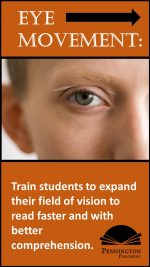How to be an Effective Reading Specialist
As an elementary reading specialist and staff developer for five years in the Elk Grove Unified School District in Northern California, I learned from lots of my mistakes. In the hope that prospective reading specialists, coaches, and staff developers might learn from someone else’s mistakes, I’ve jotted down a few tips. Administrators might learn a few things about professional development and site support, as well.
1. Get to know the teachers that you are working with outside of their classrooms. The staff room should be your starting point for building relationships. Your first contact should never be a classroom observation with your clipboard in hand and the principal in tow. Also, hang out with teachers while they are doing duties. Offer to take a duty assignment at random.
2. Build trust. Although your boss may be the principal or district supervisor, remind teachers that you really work for them and that what they say/share will remain in strict confidentiality (no snitchin’ to the principal). Never say a negative word about a teacher. For example, “Mr. Brown has no classroom management skills and does not teach to the standards” can be better said as “Mr. Brown really cares about improving his teaching craft, as we all do, and is working on classroom management and teaching to the standards.”
3. Be a classroom helper. Offer to help do short workshops with below level readers IN THE ROOM, so that the teacher can keep an eye on you. All teachers want help with their kids. Do individual reading screenings. Offer to help the teacher complete individual diagnostic and formative assessments. You need to earn the right to be heard.
4. Remind teachers that you are there to help and not to evaluate. Remind teachers that you work for them and that what they say/share will remain in strict confidentiality (no snitchin’ to the principal).
5. Offer to take the teacher’s class, so that the teacher can do a peer observation. Teachers rarely have a chance to see each other in action.
6. Offer to do a demonstration lesson and ask for the teacher’s critique of your own teaching and what you share. Ask for criticism and let the teacher see your vulnerabilities and weaknesses as a fellow teacher. All teachers have insecurities. By showing that you are not perfect, you will open up the channels of communication and trust. Teachers will ask for your feedback and input on their own teaching, if they see you as an equal with the time and resources to help them.
7. Keep staff presentations short and sweet. Don’t be a know-it-all. When at all possible, enable another teacher to become the staff presentation star. Be a coach and let the players take all the credit.
8. Compliment a teacher’s teaching frequently and direct those compliments to that teacher’s colleagues and to administrators. Make teachers feel good about themselves because of you. A brief note is better than a verbal compliment. Every teacher is concerned about his or her reputation among colleagues. Build up; never tear down.
9. Run a school-wide reading incentive program and build relationships with kids. The more the kids like you, the more they will ask their teachers to have you visit their classrooms. Pop into classrooms weekly with cool reading bookmarks and rewards certificates. Eat lunch with the kids and hang out with them on the playground.
10. Find out who the most influential colleague is and start building relationships there.
*****

The Science of Reading Intervention Program
The Science of Reading Intervention Program: Word Recognition includes explicit, scripted, sounds to print instruction and practice with the 5 Daily Google Slide Activities every grades 4-adult reading intervention student needs: 1. Phonemic Awareness and Morphology 2. Blending, Segmenting, and Spelling 3. Sounds and Spellings (including handwriting) 4. Heart Words Practice 5. Sam and Friends Phonics Books (decodables). Plus, digital and printable sound wall cards, speech articulation songs, sounds to print games, and morphology walls. Print versions are available for all activities. First Half of the Year Program (55 minutes-per-day, 18 weeks)
The Science of Reading Intervention Program: Language Comprehension resources are designed for students who have completed the word recognition program or have demonstrated basic mastery of the alphabetic code and can read with some degree of fluency. The program features the 5 Weekly Language Comprehension Activities: 1. Background Knowledge Mentor Texts 2. Academic Language, Greek and Latin Morphology, Figures of Speech, Connotations, Multiple Meaning Words 3. Syntax in Reading 4. Reading Comprehension Strategies 5. Literacy Knowledge (Narrative and Expository). Second Half of the Year Program (30 minutes-per-day, 18 weeks)
The Science of Reading Intervention Program: Assessment-based Instruction provides diagnostically-based “second chance” instructional resources. The program includes 13 comprehensive assessments and matching instructional resources to fill in the yet-to-be-mastered gaps in phonemic awareness, alphabetic awareness, phonics, fluency (with YouTube modeled readings), Heart Words and Phonics Games, spelling patterns, grammar, usage, and mechanics, syllabication and morphology, executive function shills. Second Half of the Year Program (25 minutes-per-day, 18 weeks)
The Science of Reading Intervention Program BUNDLE includes all 3 program components for the comprehensive, state-of-the-art (and science) grades 4-adult full-year program. Scripted, easy-to-teach, no prep, no need for time-consuming (albeit valuable) LETRS training or O-G certification… Learn as you teach and get results NOW for your students. Print to speech with plenty of speech to print instructional components.
Click the SCIENCE OF READING INTERVENTION PROGRAM RESOURCES for detailed program description, sample lessons, and video overviews. Click the links to get these ready-to-use resources, developed by a teacher (Mark Pennington, MA reading specialist) for teachers and their students.
Get the SCRIP Comprehension Cues FREE Resource:
![]()
Get the Diagnostic ELA and Reading Assessments FREE Resource:![]()
*****




 The author’s
The author’s